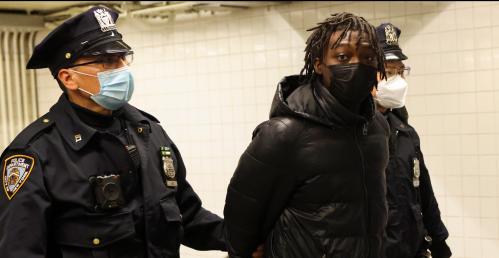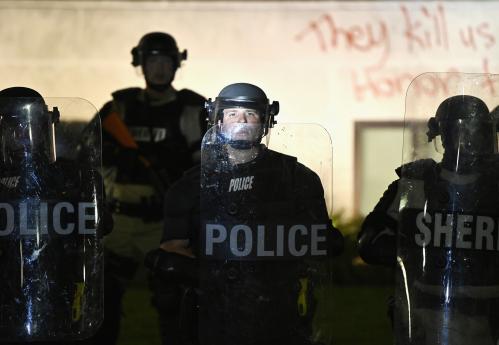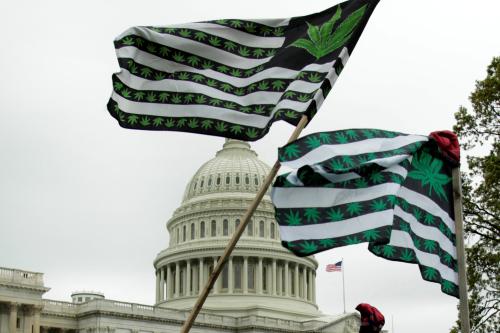This post was originally published on Quartz on May 28.
The Minneapolis-St. Paul metro area is home to over a dozen Fortune 500 companies, including Target, 3M, and General Mills. But in a matter of years, this global headquarter region has become a flashpoint of racial hostility from police brutality, with the murders of Philando Castille in 2017, George Floyd in 2020, and Daunte Wright in 2021.
It’s been one year since the murder of George Floyd, an event that reshaped the nation and forced millions of Americans to finally grapple with systemic racial injustices. One would think that the rush of corporate commitments to improve Black lives would at least take root in Minneapolis-St. Paul. It has not.
This past winter, one of us attended a meeting in Minneapolis-St. Paul with Fortune 500 and large corporate CEOs and Black business executives to identify opportunities for corporate action for racial equity. After 90 minutes of discussion about the challenges and opportunities before us, the meeting’s facilitator asked a poignant question: “What is your aspiration for what success of our work should look like?”
Black executives named dismantling institutional racism and envisioned partnerships with CEOs and corporations to achieve measurable results such as closing regional wage gaps, representation in executive ranks on par with Black representation in the market, and creating an equitable standard of living between Black and white Minnesotans. They aspired to achieve results that required anti-racist actions on the part of employers and elected leaders.
In contrast, white executives in the room aspired for less tangible results grounded in meritocracy. They envisioned equal opportunity, the satisfaction of knowing they made a difference, and creating a world where merit informed how people moved up or down the economic ladder. The dissonance in the experiences and aspirations of Black people and white people was palpable, and not new to those leading anti-racism and economic justice organizations around the country.
For decades, in Minneapolis-St. Paul and cities like it all over the country, corporations have been forming partnerships and coalitions to address the byproducts of racism such as unemployment, substandard K-12 education, inadequate housing, and health disparities. While some of these initiatives have produced programmatic results, most have not moved the needle for Black and brown people. To bring about real, measurable, and lasting change, corporate leaders must commit to internal and external actions to undo the systemic racism entrenched in the communities their customers and workers call home.
Unfortunately, in the past year, corporations have prioritized highly visible national equity campaigns and philanthropic commitments over the harder, needed work to dismantle systemic racism inside their businesses and in the communities in which they operate. Consider the communities that could benefit from deep and sustained actions to improve equity: Louisville, Ky. (Breonna Taylor), Columbus, Ohio (Ma’Khia Bryant), Brunswick, Ga. (Ahmed Aubrey), Chicago (Adam Toledo), Sacramento, Calif. (Stephon Clark), Baltimore (Freddie Gray), St. Louis/Ferguson, Mo. (Michael Brown), Turtle Mountain Indian Reservation, N.D. (Brandon Laducer), and Atlanta (Xiaojie Tan, Daoyou Feng, Hyun Jung Grant, Suncha Kim, Soon Chung Park, Yong Ae Yue, Delaina Ashley Yaun, Paul Andre Michels), to name just a few.
Consider the trends in Minneapolis-St. Paul, which are not unique to the Twin Cities. For a major hub of global commerce, the region has one of the widest earnings gaps between whites and people of color, ranking 46th out of the 53 largest metro areas in progress on this score, according to Brookings. Black and Asian American workers are massively underrepresented in management and rapidly growing medical and tech occupations in Greater Minneapolis-St. Paul, at a time when the private sector says they are diversifying C-suites and workplaces overall. Meanwhile, less than 3% of Black, Latino or Hispanic, and Asian American adults in the metro area own businesses, according to the Center for Economic Inclusion.
These trends cannot be reversed by siloed corporate investments or ad hoc hiring goals. Confronting them requires intentional, coordinated actions among employers and nonprofit partners, driven by quantifiable goals reflecting the unique challenges in that community.
First, CEOs and private sector executives in home regions must set regionwide quantifiable goals that they can achieve together. This could include workforce, supplier, and investment goals that target the 4% of all occupations that account for more than 60% of the overall value of the Black wage gap, making a significant impact on closing racial disparities in housing, education, and health.
This process must be data-informed and done in partnership with Black leaders who can provide credible guidance for goal setting and strategy. For instance, as hiring accelerates in the post-COVID digital jobs boom, CEOs could use this window to double the share of Black workers employed in growing computer and science occupations. This is particularly pressing in greater Minneapolis-St. Paul, where African Americans make up 7.8% of the region’s workforce but only 3.8% of computer-oriented positions.
Second, once goals are set, corporate coalitions and CEOs should collaborate with key nonprofit and government partners to develop strategies to achieve those goals, including regularly monitoring progress on performance metrics. By working in partnership, CEOs’ pooled demand could accelerate results and drive pressure to address systemic bias in workforce training, land-use policy, and access to capital for business growth and real estate development.
Collective CEO action could also create solutions in which there have been historic gaps, such as large-scale efforts to invest in and scale minority-owned firms in high-growth sectors. Doing so would expand the pool of business partners in corporate supplier diversity initiatives and provide intergenerational wealth-building opportunities for residents. One model is Cincinnati’s Minority Business Accelerator, where CEO partnerships have led to investment in 70 high-growth African-American-owned businesses, resulting in the creation of 3,500 jobs and over $1 billion in revenue.
Lastly, but perhaps most importantly, CEOs must be willing to lead differently inside their corporations and embed an anti-racist lens into every facet of the business. Past failures have not occurred due to lack of good intent, but due to organizations that lacked leaders with the skills to fully nurture racial equity and inclusion as business imperatives. CEOs must be bold in their efforts to build a pool of executives and supervisors with the skills to manage for inclusion, equity, and belonging.
Some corporations are taking these proactive steps to dismantle internal racism and promote inclusion in their communities. Target has established a multifaceted internal advisory committee to ensure all employees are grounded in its commitment to racial equity. U.S. Bank has developed strategies for increasing Black wealth, homeownership, and business development, and announced increased philanthropy in Black communities and investments in Black businesses in its hometown of Minneapolis. These efforts are a good start, but must continue for years to undo generations of racism and wealth extraction.
Even the boldest of corporate epiphanies will go nowhere if they do not work hand-in-hand with the politicians writing the laws. Here is where leaders can harness the critical flexibility of the American Rescue Plan’s $350 billion in state and local recovery funds—investing in policies to close long-standing postsecondary education and wage gaps and stimulate homeownership and business growth in Black, Indigenous, Latino or Hispanic, and Asian American communities. Leaders must use this moment to develop the capacity of existing institutions or new partnerships with credibility in Black and brown communities to ensure a racially inclusive economic recovery plan.
Though collective CEO action in regions is just beginning, several notable examples of regional collaboration are Minneapolis’ Anti-Racism and Economic Trust, the Corporate Coalition in Chicago, and Business Equity for Indy.
As we continue this journey in Minneapolis-St. Paul, we are keenly aware that one police officer found guilty still leaves us far from the end of this story. The past year has shown us that while we’re moving in a better direction, corporate actions will only result in measurable change if they are rooted in place, co-created with Black people, and have defined, shared aspirations.
In short, tangible improvements in racial and economic equity at the local level is where corporate credibility—and overall national progress—will ultimately be judged.








Commentary
A year after George Floyd’s murder, corporate promises haven’t made Minneapolis more equal
June 17, 2021